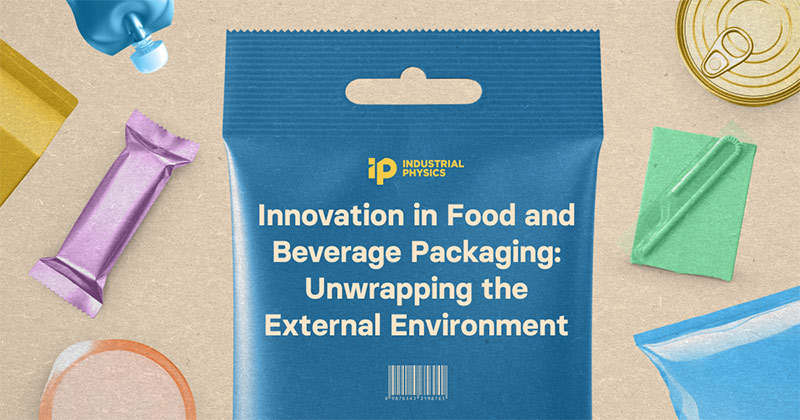Almost Half of Food/Beverage Packaging Professionals Investing to ‘Future-proof’ Operations
- Published: February 05, 2025

Nearly half of packaging companies in the food and beverage industries are turning their focus to futureproofing to manage challenges and a changing market according to the latest research from Industrial Physics.
Industrial Physics’ research series on international food and beverage packaging has concluded with its final report on the external factors influencing the level of innovation reported across the two industries. The report, titled Unwrapping the external environment examines three key areas:
- Supply chain challenges
- Consumer reactions
- Investment in futureproofing
The research revealed that over half (53%) had been impacted by difficulty in sourcing materials, particularly for those working with paper packaging (58%). Contributions from the experts explained the impact as a combination of factors, including paper’s resurgence into popularity due to its sustainable credentials and the lack of established circular economy for paper packaging.
It was also suggested that challenges in sourcing materials have driven innovation in some cases, with companies introducing data analytics to allow them to better predicted how much they need and how to ensure materials are used as efficiently as possible.
Rodger Segelstrom, global product line director at Industrial Physics, commented: “External factors such as material availability; inflation; delays in the wider supply chain; and changing consumer expectations are all shaping how companies are developing their strategies.”
56% of respondents agreed their strategies are being reshaped in line with consumer reactions, particularly in the UK and the U.S. To source those insights, the majority of respondents agree that their company has conducted consumer research to inform packaging innovation. Consumer goals are evident in recent innovations but sometimes don’t quite hit the mark, with examples including a pulp bottle that is coated with a lacquer inside, preventing its endless recyclability.
In addition to short term reactions, research also revealed how food and beverage packaging professionals are planning longer term. Almost half (48%) agreed their company has invested in futureproofing, with over 1 in 5 (22%) strongly agreeing.
Steve Davis, global director of product management at Industrial Physics, shared: “There's more instability on the planet than there's been for years, and that drives people to make sure that they’ve got what they need to continue meeting demand, and do what they can to forecast.”
“One of the common examples of futureproofing that we see in food and beverage packaging at the moment is the introduction of more automation in the production and testing processes, to reduce the level of errors, and collect more data which can help with planning and continuous improvement without reliance on significant investment.”
Rodger concluded: “Our research highlighted that only a quarter believe their company is currently innovating, with only 41% planning to. However, examining the data in all three reports, I believe this is due to perceptions of the term ‘packaging innovation’. Across the globe, companies are taking new approaches to reduce waste, bridge skills gaps, get more accurate testing results and increase cost effectiveness, each demonstrating an innovative approach even if there is no tangible change to the packaging produced. Going forwards, I expect to see even more examples of companies bolstering their operations, and it is the role of companies such as Industrial Physics to ensure this is completed without compromising the safety or quality of packaging products produced.”
To learn more, click here.




